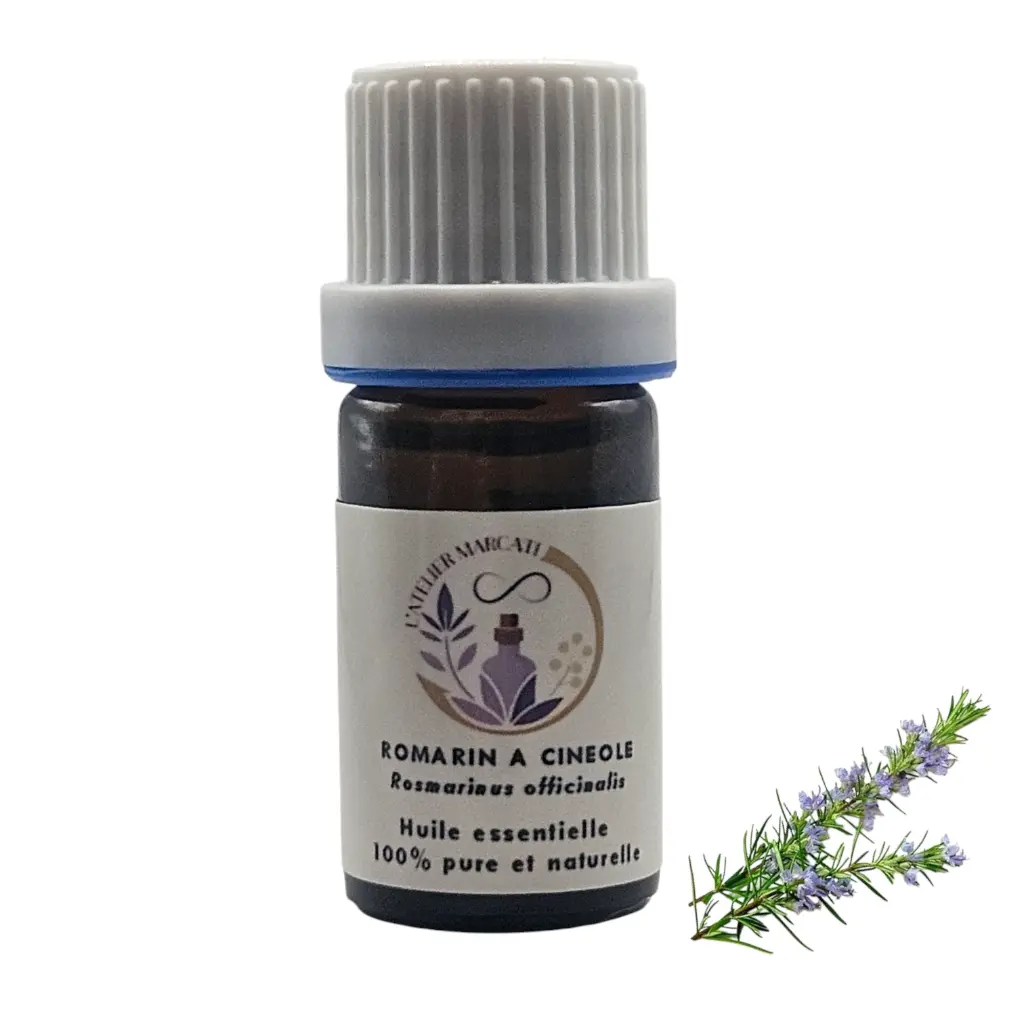Rosemary Cineole Essential Oil
Botanical name: Rosmarinus officinalis cineoliferum

Chemotype and indications
Identity card
Name : Rosemary Officinal with Cineole
Botanical name: Rosmarinus officinalis cineoliferum
Distilled part: Flowering plant
Botanical family: Lamiaceae
Origin: France
Chemical composition
- Ketones: Borneone
- Esters: Bornyl Acetate
- Monoterpenes: Alpha and Beta Pinene, Camphene
- Monoterpenols: Alpha Terpineol, Borneol
- Oxides: 1,8 Cineole (Majority)
- Sesquiterpenes: Beta Caryophyllene
- Coumarines: Furocaumarines
- Esters: Benzyl Acetate
- Monoterpenes: Limonene (65 to 94%)
- Monoterpénols: Citronnellol, linalol
Physical properties and therapeutic indications
- Bactericidal (Staphylococcus aureus and white)*
- Bronchitis*
- Candidiasis*
- Cystitis*
- Expectorant*
- Chronic fatigue*
- Text*
- Pulmonary cooling*
- Sinusitis*
- CNS stimulant*
Emotional, psychological properties and therapeutic indications
- Asthenia
- Balancing
- Mental fatigue*
- Promotes concentration
- Acts on memory
- Confusion mentale
- Intellectual overwork
- Brain stimulant
Additional information
Danger :
HE toxic at high doses
Avoid overdose
*Sacred Plant
Legend: * powerful, ** very powerful; *** extremely powerful (power value for associated pathology)
Reference and bibliographic source: Lily BAYER and Dr Hervé STAUB, (2013) "In-depth treatise on Phyto and Aromatherapy", Ed. Grancher. p. 634.
AROMATHERAPY INDICATIONS AND THE USE OF ESSENTIAL OILS DO NOT CONSTITUTE A MEDICAL DIAGNOSIS AND DO NOT REPLACE A DOCTOR'S ADVICE OR MEDICAL TREATMENTS!



